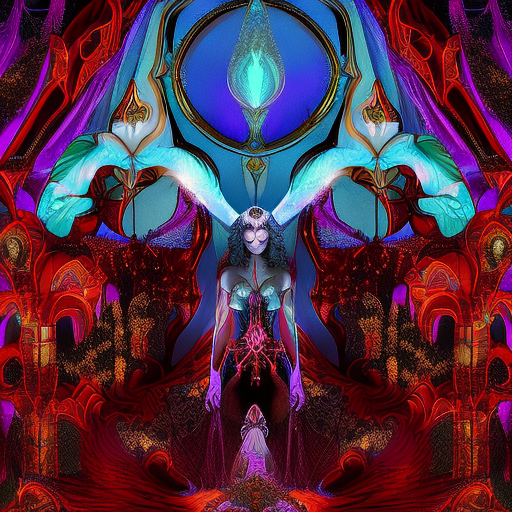The Palace of Illusions: A Retelling of the Mahabharata
The Palace of Illusions by Chitra Banerjee Divakaruni is a captivating retelling of the ancient Indian epic, the Mahabharata, from the perspective of its central female character, Panchaali. This enchanting novel explores themes of love, power, duty, and the complexities of human relationships, offering readers a fresh and feminist perspective on a timeless tale.
Discovering Panchaali’s Journey
The story begins with Panchaali’s birth, a miraculous event that sets the stage for her extraordinary life. Born from a sacred fire, she is destined to become the wife of five heroic brothers, the Pandavas, who are central figures in the Mahabharata. As Panchaali grows up, she faces numerous challenges and struggles, including a prophecy that predicts her marriage will bring about a great war.
Panchaali’s journey takes her through the opulent palace of her childhood, where she learns the art of politics and manipulation from her enigmatic mother-in-law, Queen Kunti. She navigates the complexities of her relationships with her five husbands, each with their own strengths and flaws. Panchaali’s love for her husbands is both passionate and complicated, as she grapples with her own desires and societal expectations.
The Great War and Its Aftermath
The novel reaches its climax with the infamous Kurukshetra War, a cataclysmic battle between the Pandavas and their cousins, the Kauravas. Panchaali’s role in the war is not limited to being a mere spectator; she becomes an active participant, using her intelligence and wit to shape the outcome of the conflict. Her actions have far-reaching consequences, leading to the downfall of empires and the loss of countless lives.
Following the war, Panchaali faces the aftermath of her choices and the devastating impact of her revenge. She grapples with guilt, regret, and the weight of her responsibilities as a queen and a mother. Through her trials and tribulations, Panchaali emerges as a resilient and complex character, challenging traditional notions of femininity and power.
A Feminist Retelling of an Ancient Epic
The Palace of Illusions is not just a retelling of the Mahabharata; it is a feminist reinterpretation of a story that has been predominantly told from a male perspective. Divakaruni gives voice to Panchaali, a character often overshadowed by the male heroes of the epic, and explores her thoughts, desires, and agency. The novel delves into the themes of gender inequality, societal expectations, and the limitations placed on women in ancient Indian society.
Through Panchaali’s eyes, readers gain a deeper understanding of the complexities of love, power, and duty. Divakaruni’s lyrical prose brings the ancient world to life, immersing readers in a rich tapestry of myth, magic, and human emotion. The Palace of Illusions is a testament to the enduring power of storytelling and the importance of diverse perspectives in literature.
Key Takeaways:
- The Palace of Illusions offers a feminist retelling of the Mahabharata, giving voice to its central female character, Panchaali.
- The novel explores themes of love, power, duty, and the complexities of human relationships.
- Through Panchaali’s perspective, readers gain a deeper understanding of the challenges faced by women in ancient Indian society.
“I am not the woman who breaks easily. I was built to break mountains.”
In conclusion, The Palace of Illusions is a mesmerizing retelling of the Mahabharata that shines a spotlight on the often-overlooked female characters of the epic. Divakaruni’s skillful storytelling and feminist perspective breathe new life into this ancient tale, making it a must-read for lovers of mythology, history, and powerful female protagonists.












